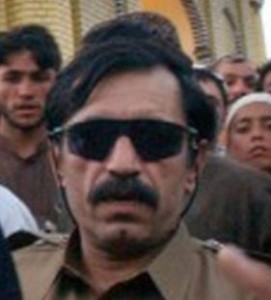What State Secrets Does UANI Have? How Did They Get Them?
In the aftermath of publication of the Pentagon Papers, the Nixon Administration was so incensed that they both broke into and wiretapped the office of Daniel Ellsberg’s psychiatrist, Lewis Fielding, in an attempt to get material with which to smear Ellsberg. Ellsberg and his attorneys eventually learned of the illegal wiretap and sued Attorney General John Mitchell. Mitchell and the government were provided some shielding in Ellsberg v. Mitchell by the concept of state secrets.
Glenn Greenwald noted that when he was running for office, Barack Obama disparaged the Bush Administration’s use of the doctrine of state secrets and the expansion of its use to dismiss entire cases rather than to simply suppress individual pieces of information. And yet, once Obama got into office, Greenwald pointed out that the Obama Administration used the exact same tactic to get dismissal of Mohamed v. Jeppesen Dataplan, in which a victim of CIA rendition and torture attempted to sue the company used as a front for arranging rendition flights.
These two cases, along with other highpoints of government malfeasance in using state secrets to hide criminal behavior or simple errors by the government such as Al-Aulaqi v. Obama and Al-Haramain v. Bush all appear as case law on which the Justice Department rests its arguments in a filing (pdf) in a case in which Greek shipping executive Victor Restis is suing United Against Nuclear Iran (under their legal name of American Coalition Against Nuclear Iran, Inc.) for damages caused by UANI’s spreading of information that Restis argues is false and defaming. As I pointed out earlier, this information was spread by UANI as part of their “name and shame” campaign aimed at companies they felt were helping Iran to avoid sanctions put into place to prevent Iran developing nuclear weapons. The government’s argument is fairly straightforward, even though the government is not a named party in the suit:
The United States has reviewed the pleadings and record in this case in order to determine whether discovery and further litigation is likely to risk disclosure of information in which the Government has a specific governmental privilege and whether the claims and defenses in this action can be adjudicated without the need for or risk of disclosure of privileged information.
The Government has concluded that information that would be at risk of disclosure in discovery and further proceedings is properly subject to the state secrets privilege and should be excluded from this case. Further, because information subject to the state secrets privilege is inherently at risk of disclosure in further proceedings, the Government also seeks dismissal of this lawsuit. The reasons for these determinations are set forth in classified declarations submitted in support of the United States’ assertion of the state secrets privilege solely for the Court’s ex parte, in camera review (the “State Secrets Privilege Declarations”).
So just what is this state secrets information that could be exposed in the case? Here (pdf) is how attorneys for Restis describe the basis for UANI’s accusations:
Plaintiffs soon learned through a journalist to whom Defendants had spread these false allegations that Defendants were relying on two patently fraudulent documents whose authenticity or credibility Defendants have never attempted to defend, despite ample opportunity to do so. Nevertheless, in an effort to bolster its false allegations, Defendants repeatedly and publicly claimed that these statements were based on “numerous documents and statements,” “highly credible confidential sources,” as well as “valid research, credible documents, distinguished relationships, and preeminent sourcing.”
Hmmm. Relying on documents that are “patently fraudulent”. That sounds a lot like the forged Iraq yellowcake document to me. And Restis’ team has an idea for how the documents came into UANI’s possession (from the same filing):
Plaintiffs have reason to believe that the documents were forged by Anastasios Pallis, a Greek businessman who had a falling out with Plaintiff Mr. Restis when the latter discovered that the former had stolen millions of Euros from him and then reported Pallis to authorities. Plaintiffs understand that Mr. Pallis provided these documents to UANI through Meir Dagan, a member of UANI’s Advisory Board and former director of Israeli intelligence.
Elsewhere, the Restis team lays out (pdf) some of the evidence for forgery: Read more →

